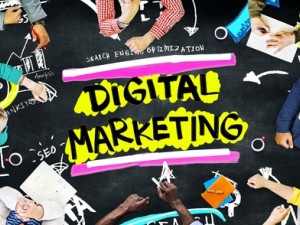
Global digital retail marketing spend will double by 2020, reaching over $360 billion.
This is according to a new study by Juniper Research, focusing on digital retail marketing: coupons, advertising and consumer engagement 2015-2020, which found digital retail marketing is set to double from $174 billion in 2015.
While the digital retail marketing industry will continue to be dominated by advertising revenues, the research revealed coupon contributions will see strong growth, driven in part by the rise of Bluetooth beacons.
The beacons, which find the location of a smart device using Bluetooth low energy, or Bluetooth Smart signals, use transmitters to push marketing content and information to devices which have their Bluetooth enabled.
Research author Lauren Foye says beacons are set to provide a boost to retailers.
"We see major players promote in-store offers and deals though mobile devices, targeting consumers while they are shopping.
"Coupled with loyalty schemes and rewards, retailers have clear potential to monetise those setting foot in their stores, aiding in promoting more traditional bricks and mortar retail," she points out.
Juniper forecasts that almost 1.6 billion coupons will be delivered annually to consumers via beacon technology by 2020.
According to a PwC report, Internet advertising will become the largest advertising segment.
Global total Internet advertising revenue is forecast to grow from US$135.42 billion in 2014 to US$239.87 billion in 2019, a CAGR over the period of 12.1%.
As the segment captures an ever-larger portion of advertising budgets, it will exceed TV to become the largest single advertising category by 2019, says PwC.
Matt Hobbs, director in PwC's advisory practice and US Internet advisory leader, says display Internet advertising revenue was the second-largest component of Internet advertising revenue in 2014 and maintains a solid 7.9% CAGR to 2019.
"Yet mobile Internet advertising revenue's rapid growth of 23.1% CAGR means that it will overtake display by the end of the forecast period," he reveals.
A recent mobile report by Mobile Marketing Association for SA says smartphone adoption in SA will push mobile advertising to become mainstream as it has the highest penetration reach - making mobile the most powerful channel for customer engagement in SA.
Nicolle Harding, chair of research and measurement for MMA SA and country manager at Effective Measure South Africa, says the power of mobile is not just in its ability to reach and influence consumers, but mobile gives an entirely new dimension to people's experiences and enables marketers to achieve new levels of continuous customer touch and engagement.
However, sharing a different perspective, Amanda Adam, in her Duo marketing blog, says digital advertising in SA will be as diverse as the people who live here.
"'Real-time engagement', 'geo-marketing', 'remarketing', 'second screen', 'mobile', 'personalised content', 'video' and 'e-commerce', will all play a role here in some way, however digital marketers in SA would be foolish to pour all of their efforts and budgets into digital advertising alone - especially if they're after the majority of South African consumers," observes Adam.
There is a huge divide between rich and poor and this means that the majority of our population (estimated at 70.6%) still use feature phones, she continues.
"At the same time, the part of the population that does own smartphones - the group with more disposable income to spend - is following the trends of the developed world.
"Display advertising will need to work even harder in future, as consumers become immune to the hundreds of banner ads they see every day. The same goes for intrusive pop-up adverts," advises Adam.
Share